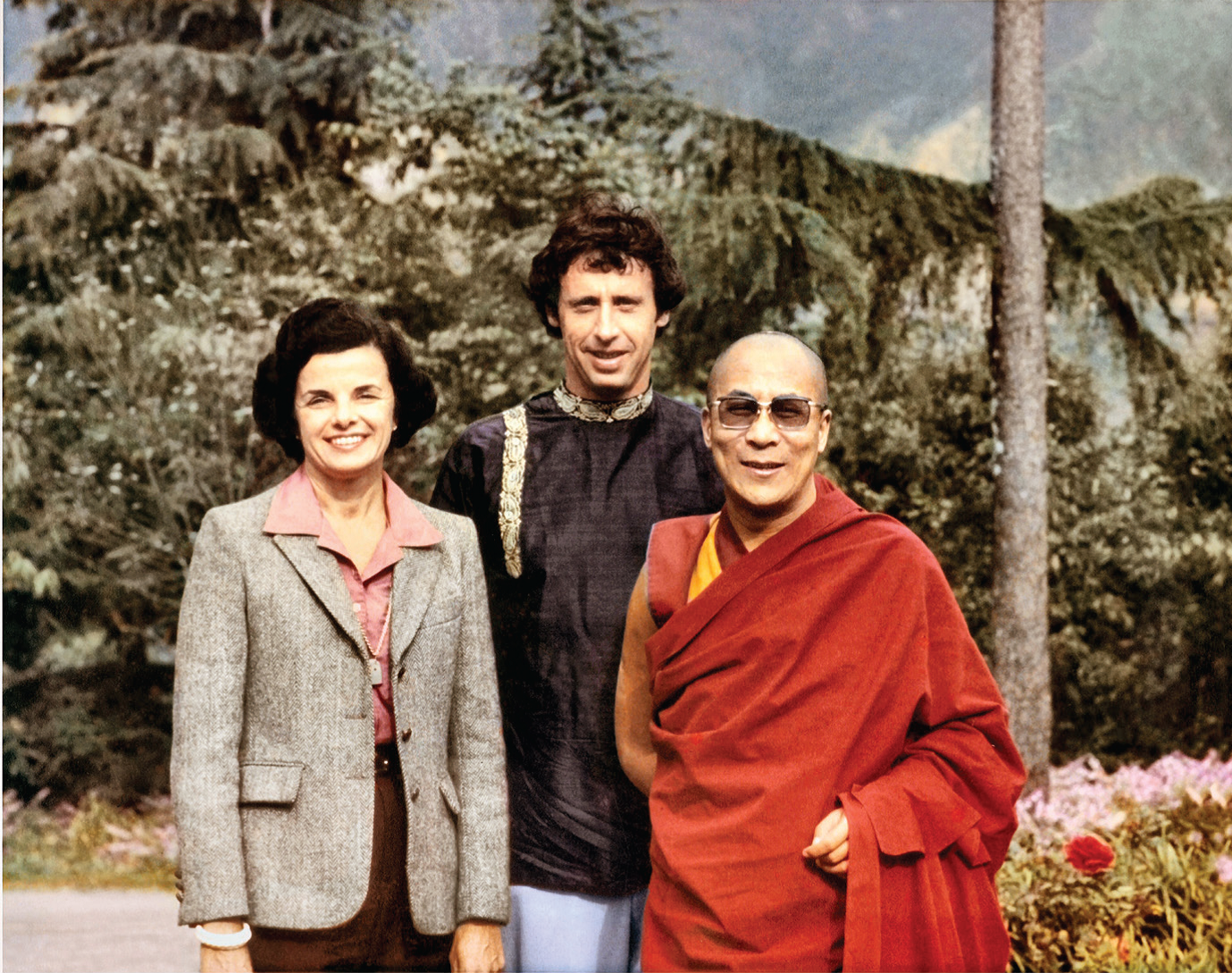It was the practice of the first thirteen Dalai Lamas, a lineage dating to the 15th century, to never or rarely leave Tibet. Few ever traveled even to neighboring India or China.
His Holiness the 14th Dalai Lama, who will mark his eighty-second birthday on July 6, is, in contrast, a man of his era.
As Dan Goleman writes in the July 2017 issue of Lion’s Roar, a lively publication on contemporary ideas of Tibetan Buddhism, His Holiness travels widely, “meeting people of all kinds, heads of state and world-class scientists, spiritual leaders and financiers, slum dwellers and social activists. Our concerns are his, whoever we are.”
A friend of mine for more than forty years, His Holiness is a warm, open person with a sharp wit and an easy laugh.
Although certainly not by choice, he has been anchored most of his life—more than sixty years—in Dharamsala, India, in exile from China-controlled Tibet.
His first trip to the United States was to San Francisco in 1979, shortly after my wife, U.S. Senator Dianne Feinstein, became mayor. His message was greeted warmly in our city, a milestone that contributed over time to accelerating international calls for China to end its repressive policies toward the Tibetan people.
Nearly a decade later, in 1988, the International Campaign for Tibet was founded. Now with offices in Washington, Amsterdam, Brussels and Berlin, this NGO advocates for Tibetans’ freedom and human rights and protecting Tibetan culture and environment. The American Himalayan Foundation embraces many of these goals.
His Holiness has not been the official leader of Tibet’s exiled government since he handed over his formal political authority to an elected leader in 2011. He remains not only Tibetan Buddhists’ spiritual leader, of course, but one of the world’s most admired and inspirational voices for peace and compassion.
The Chinese government has already staked out plans publicly to identify a 15th Dalai Lama, a shameful ploy to inject state influence into the future of Tibetan Buddhism in China. An estimated 400 million Buddhists live in China, including, as His Holiness often notes, the mother of Chinese leader Xi Jingping.
His Holiness says he does not know when he will be reborn. It could be in a year or perhaps a hundred years after he passes. He has said that under current circumstances he would not want to be reborn inside Tibet.
“The great mystery about China’s policy is why it seems to have decided that its best hope lies with the next Dalai Lama, not this one,” The Economist says.
“Unlike many Tibetans, he has accepted Chinese sovereignty. He has used his enormous prestige to urge Tibetans to refrain from violent resistance….To safeguard its internal security, placate its disgruntled Tibetan citizens, and improve its international reputation, common senses suggests China should start talking seriously to the Fourteenth Dalai Lama.”
No one can say if and when talks with the Chinese about the return of His Holiness will resume. Xi is expected to hold power at least another five years, perhaps longer.
His Holiness remains positive. He believes he himself has another one-fourth of his life still ahead, anticipating he could live another thirty-one years, to age 113. At some point, he also believes, he and millions of Tibetan exiles and those suffering in the homeland under Chinese rule will see a free Tibet before he passes from this life.
** **
The photo with us and His Holiness was made in Dharamsala late in 1978. The Dalai Lama happily accepted then the invitation we brought from Mayor George Moscone for His Holiness to visit San Fransisco early the next year.
This was on the first leg of our one and only journey together into Nepal. That story, including unexpected discomforts along the trekking trails below Mount Everest and stunning, tragic developments about to unfold in San Francisco, is retold in chapter 8 of An Accident of Geography, “Poise and the Middle Path in Local Matters.”


Leave a Reply